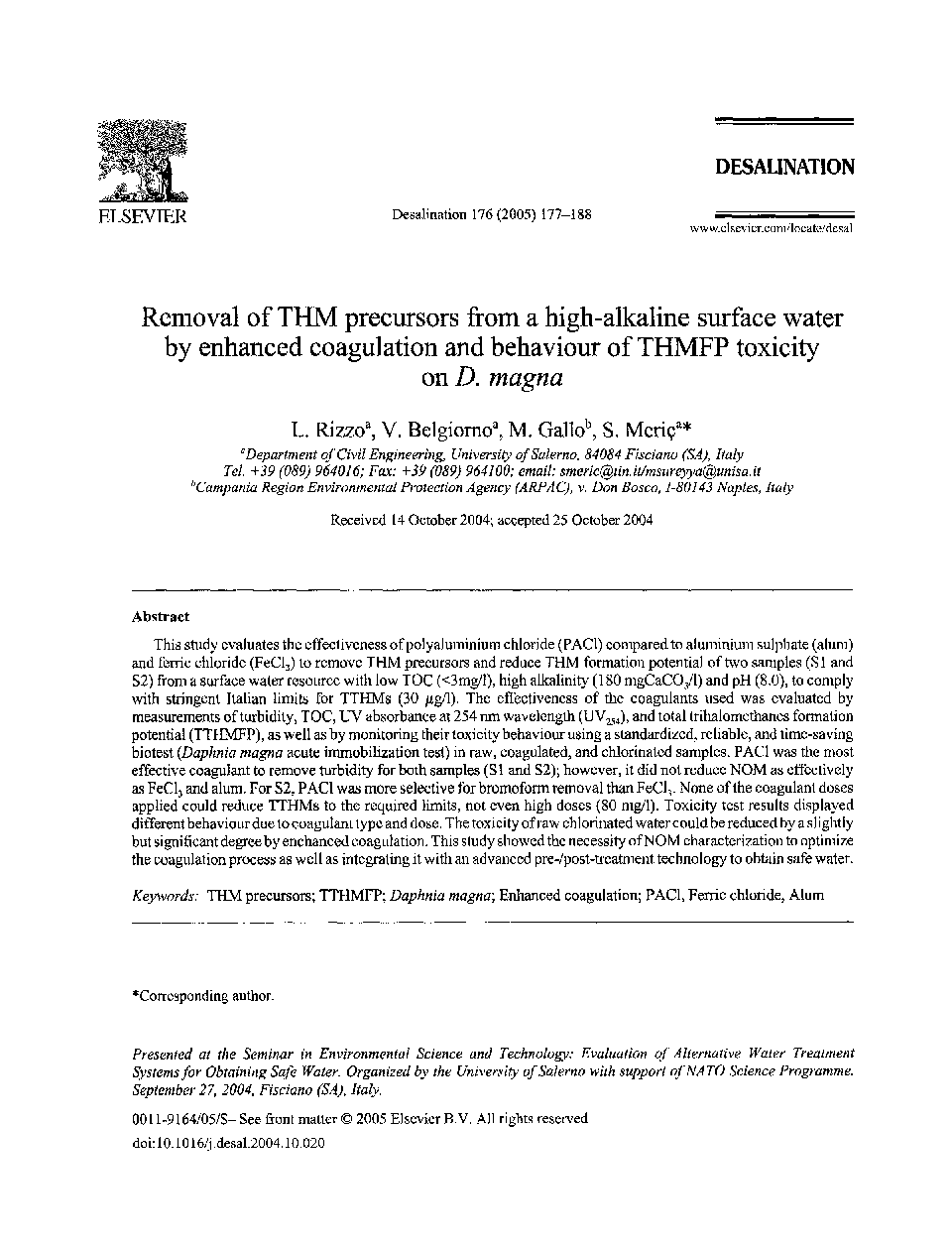| Article ID | Journal | Published Year | Pages | File Type |
|---|---|---|---|---|
| 9681213 | Desalination | 2005 | 12 Pages |
Abstract
This study evaluates the effectiveness of polyaluminium chloride (PACl) compared to aluminium sulphate (alum) and ferric chloride (FeCl3) to remove THM precursors and reduce THM formation potential of two samples (S1 and S2) from a surface water resource with low TOC (<3mg/l), high alkalinity (180 mgCaCO3/l) and pH (8.0), to comply with stringent Italian limits for TTHMs (30 μg/l). The effectiveness of the coagulants used was evaluated by measurements of turbidity, TOC, UV absorbance at 254 nm wavelength (UV254), and total trihalomethanes formation potential (TTHMFP), as well as by monitoring their toxicity behaviour using a standardized, reliable, and time-saving biotest (Daphnia magna acute immobilization test) in raw, coagulated, and chlorinated samples. PACl was the most effective coagulant to remove turbidity for both samples (S1 and S2); however, it did not reduce NOM as effectively as FeCl3 and alum. For S2, PACl was more selective for bromoform removal than FeCl3. None of the coagulant doses applied could reduce TTHMs to the required limits, not even high doses (80 mg/l). Toxicity test results displayed different behaviour due to coagulant type and dose. The toxicity of raw chlorinated water could be reduced by a slightly but significant degree by enchanced coagulation. This study showed the necessity of NOM characterization to optimize the coagulation process as well as integrating it with an advanced pre-/post-treatment technology to obtain safe water.
Related Topics
Physical Sciences and Engineering
Chemical Engineering
Filtration and Separation
Authors
L. Rizzo, V. Belgiorno, M. Gallo, S. Meriç,
